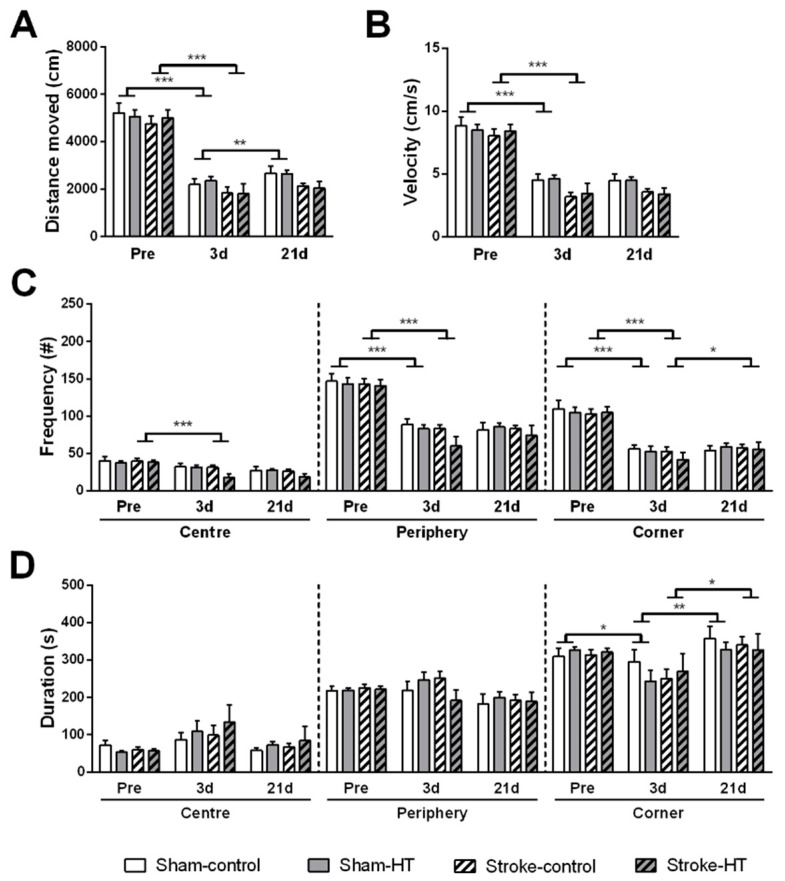Figure 3.
Activity, anxiety and explorative behavior measured in open field prior to stroke and at three and 21 days post-stroke. Locomotion was assessed by evaluating (A) the distance moved and (B) the velocity. Anxiety and exploration were evaluated by tracking (C) the frequency and (D) the time spent in the different zones in the arena (center, periphery and corner). (A,B) At three days post-surgery, all sham and all stroke mice moved a shorter distance (Sham: p < 0.001; Stroke: p < 0.001) with lower velocity (Sham: p < 0.001; Stroke: p < 0.001) compared to baseline. At 21 days post-stroke, sham animals walked more in the open field compared to three days post-stroke animals (p < 0.002). (C,D) Stroke mice visited the center (p < 0.001), periphery (p < 0.001) and corners (p < 0.001) less frequently at three days post-stroke. Sham animals also visited the periphery (p < 0.001) and corners (p < 0.001) less frequently at three days post-stroke compared to baseline, however they spent less time in the corners (p< 0.024) at three days. Values represent mean ± SEM.* p <0.05, ** p < 0.01, *** p < 0.001.

